My answer to this question is: “Yes… but are you sure you want to?”
There are times when you’re weaving krokbragd and you want to have a little area of just plain colour, whether it’s to break up a busy design or as a border section.
*This post contains affiliate links. For more information, please see my disclosure policy.
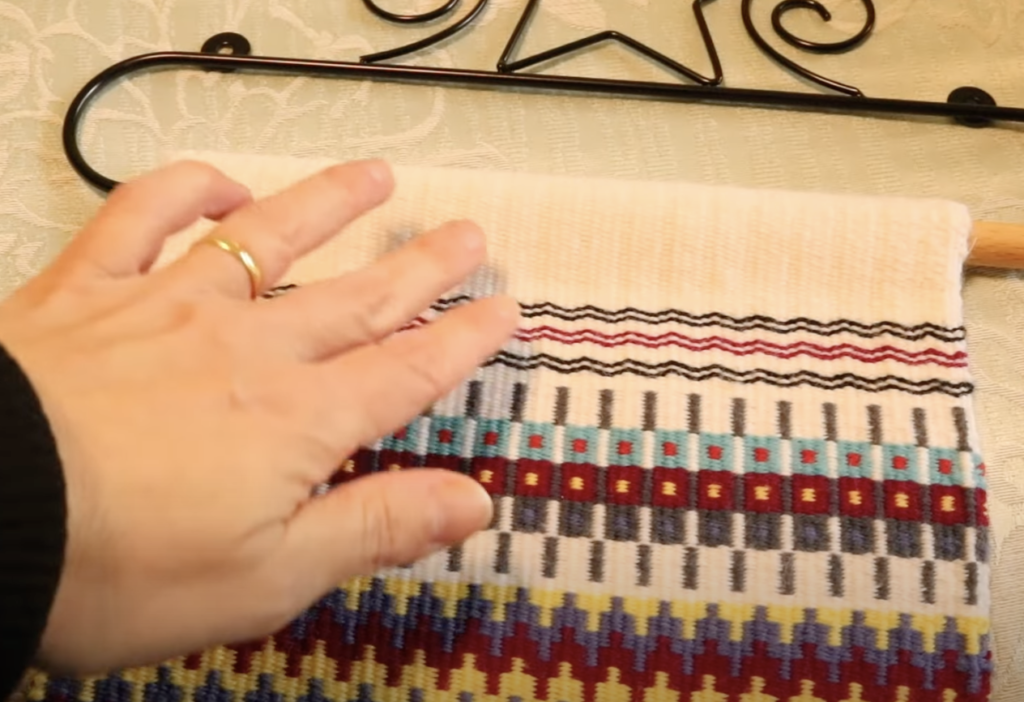
My wallhanging piece pictured above has some larger bands of solid white at the top and the bottom to act as borders. The top section was also woven in order to fold over and form the sleeve for my quilt hanger.
You might naturally think that for weaving a solid band of colour, you would choose plain weave. If you have your rigid heddle loom set up with a single heddle, heddle rod and pick up stick, plain weave is easy.
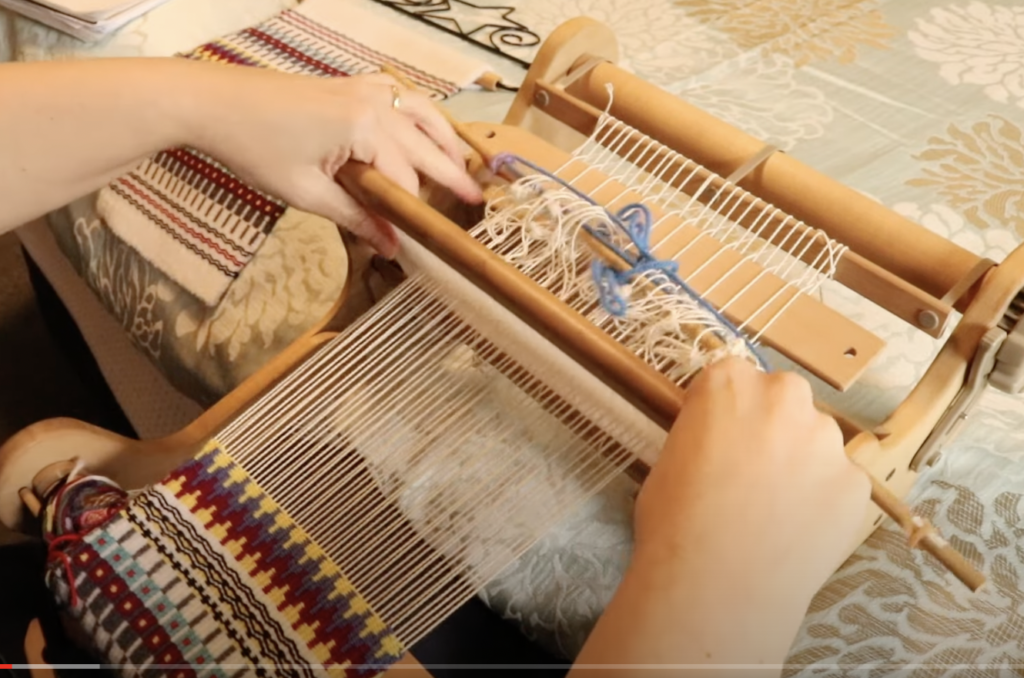
All you have to do to achieve plain weave on this setup is:
- Heddle up
- Heddle down
However, plain weave is definitely not the best option (in my opinion) and I’m going to tell you why.
Plain weave is a balanced weave
By it’s very nature, the amount of warp showing compared to the amount of weft showing is equal, ie. balanced! Now, consider the very weft faced krokbragd you have been weaving all this time. The weft completely covers the warp so that all you see is the colours of the weft forming patterns. If you suddenly throw a band of plain weave in there, it’s not going to match up so well with the krokbragd.
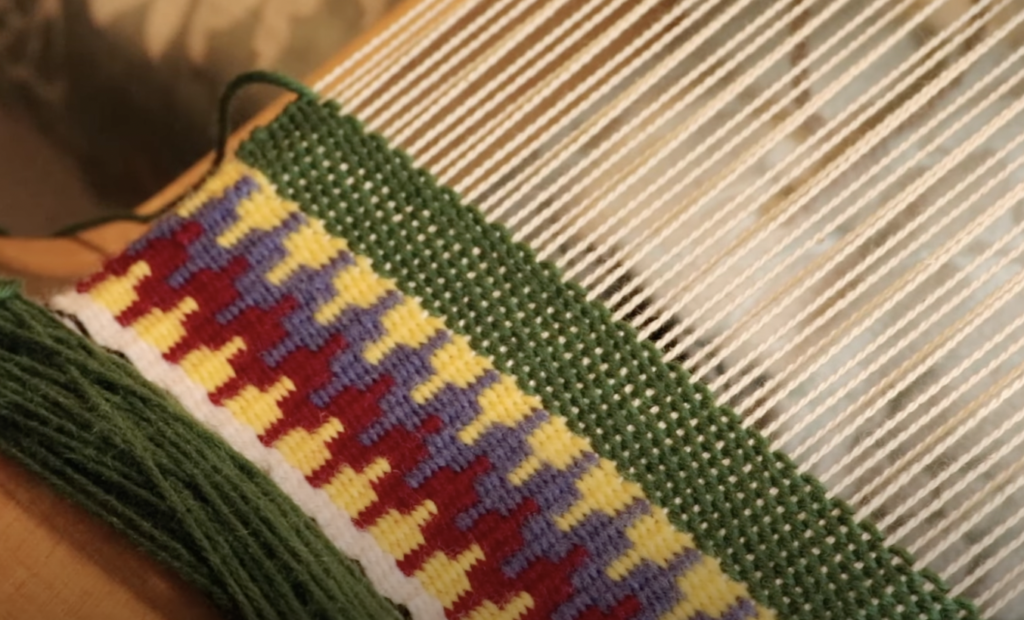
Compare the band of green plain weave just woven with the rest of the krokbragd underneath. See the problem?
The warp is showing through, and considering we have spent the rest of the piece carefully beating down the weft to cover the warp, the plain weave now sticks out like a sore thumb! If the entire piece was plain weave, it would be desired that the warp is showing through at the same rate as the weft, but not for krokbragd.
Plain weave is a lighter weave structure
It’s not only the visual aspect of the plain weave that is different to the krokbragd either. Weft faced fabrics are generally quite stiff and dense. There is a great difference in texture between the two weave structures on this piece, with the plain weave section being thin and light.
Changing the weave structures changes your edges
This difference in weight of the woven piece affects the fabric in other ways too. Krokbragd has more draw in than plain weave, so suddenly my edges are no longer consistent and look slightly bulgy in the plain weave section.
So, how do we solve this problem?
Thankfully the answer is extremely simple. All you have to do is keep weaving krokbragd!
Just use the solid colour that you want for your band of colour and move through the 3 step krokbragd weaving sequence. Don’t change your colour until you have the desired amount of weaving.
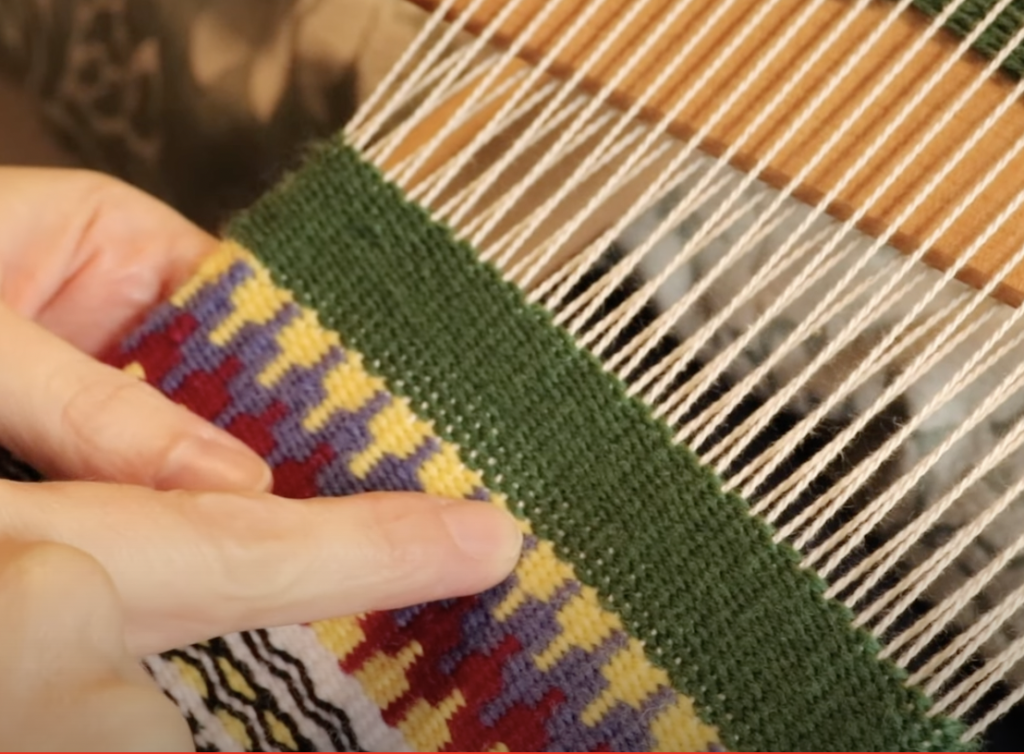
You can now compare the two sections of weaving in green – the part where the warp is showing is the plain weave and the more uniform looking part on top is the krokbragd. Also, because the green krokbragd follows the previous weave structure, it looks much more uniform and “like it belongs” there.
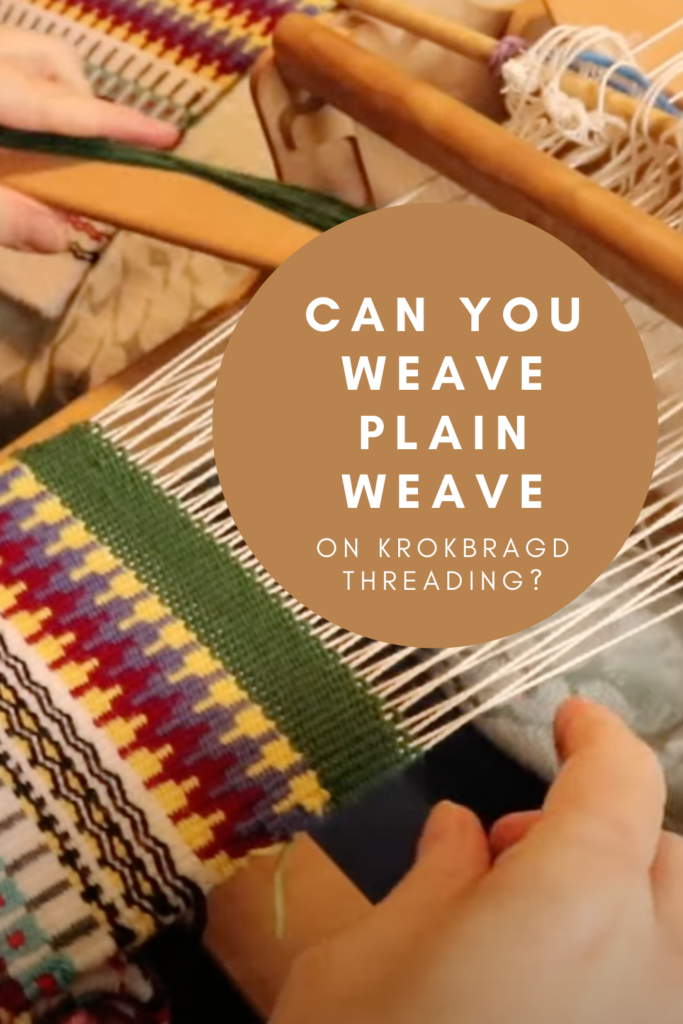
If you want to learn more about weaving krokbragd on your rigid heddle loom, check out my Krokbragd 101 online course.
If you would like to view this blog post in video format, please view here:
I hope you enjoyed this article! Perhaps it gave you some new ideas for krokbragd design? Or perhaps it has inspired you to give krokbragd a try? Let me know in the comments section below!
P.S. Have you seen the share buttons at the top of this post? You can easily share this article to Pinterest, Facebook or via email with one click. The more shares, the more weavers I can help! Thank you!
Until next time…
Happy Weaving!

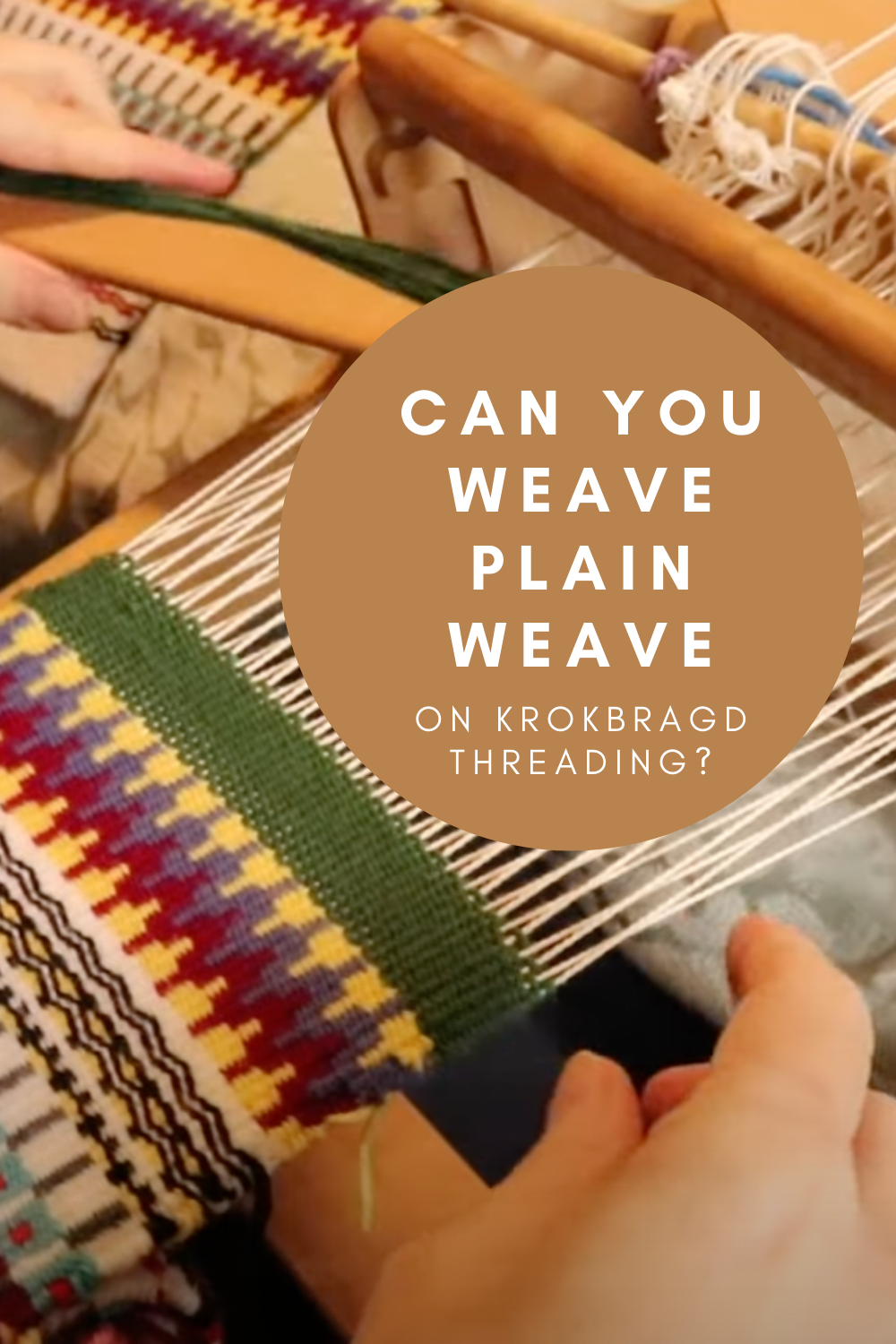
Thanks Kelly, I had been wondering about plain weave but had not considered these points. You’ve saved me the trouble of finding out for myself that it really shouldn’t be done.
Awesome, Gai!
Good article. I am hoping to start this class this evening, and that same thought had crossed my mind. Is krokbragd too stiff to use for a winter scarf?
Yes Gretchen, I think that krokbragd is too dense for a scarf. It’s much better suited to homewares – wall hangings, placemats, table runners, pillows etc.
Good to know. Thanks!
I’m still working on building my skill level prior to tackling Krokbrag. The more I learn, the more I’m anxious. Your articles are wonderful. Thank you.
Thank you, Loretta!
Thanks Kelly! I got this blog just
On time.., I was just thinking about how to do plain weave during the krockbroged but wasn’t aware to the effect it might do, so thanks for saving my weaving on time!! 🙂
No problem!